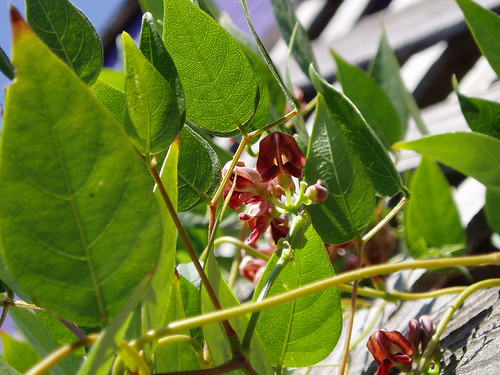Plant Bombs
 We're all feeling the heat this summer. Civilization is overstepping it's boundaries and the environment is pushing back. Welcome to Heat Island! Areas with lower concentrations of vegetation have higher amounts of reflected heat from concrete, asphalt, and Boho shades. In today's age of fleeing and surrendering natural resources what is a neo-hippie to do? Plant bombs!
We're all feeling the heat this summer. Civilization is overstepping it's boundaries and the environment is pushing back. Welcome to Heat Island! Areas with lower concentrations of vegetation have higher amounts of reflected heat from concrete, asphalt, and Boho shades. In today's age of fleeing and surrendering natural resources what is a neo-hippie to do? Plant bombs!
No, seriously. The decreasing ratio of greenbelt to urban sprawl leaves little alternative to reclaiming territory for native species. This is the definitive guide to "Seed Bombs" and making the most of your guerilla germination experience.
First and foremost seeds must be chosen and collected for ammunition. It is of utmost importance that the seeds you select for the grenades are native to your area and benefit the local ecology rather than override it. For US residents the plants.usda.gov website is the ultimate resource. The advanced search form allows you to specify:
- US Plants or Worldwide (Only US/NA Plants)
- County Distribution (Your County)
- Image Gallery (Only with Images)
- Propagated by Seed (Yes)
- Fruit/Seed Period Begin (The Current Season)
There are a few sources on the science of assembly, but none of them are very wholistic and some (the second link) suggest building the bomb inside a discarded christmas ornament or water balloon. This is a good idea in theory but i'm afraid in practice it would be counterproductive. The requirements for a seed bomb are minimal: seeds, soil, nutrients, and moisture. Ideally the bomb shouldn't include any materials that aren't organic/readily biodegradable.
I begin by wetting a mixture of vermiculite, time-release fertilizer, fine peat moss and three or four of the selected seeds. Turn the mixture until it is wet and moldable; you may have to squeeze out some water if you added too much. Encase palm-sized lumps of this in denser, clay-based soil and make a sort of shell to hold the contents together at the point of impact. You can pad the outside of the bombs with straw or large leaves to increase their cohesiveness but it's not totally necessary. Your seed bomb may vary in ratios and materials (compost instead of fertilizer, native soil instead of vermiculite and peat moss, etc.) but the principles remain the same.
Finally, you need to scout an area to bomb. Target areas include empty lots, easements that are arid and unplanted, neighbors with nothing but Home Depot annuals and expansive lawns that they water 4 times a day; anywhere that the sprouted seeds are likely to go undisturbed and won't dry out too quickly before germinating. The advantage of using native plants is many are very drought tolerant once established in their intended environment and won't require additional tending by you (or anyone for that matter).
Viva la Revolucion!

No comments:
Post a Comment